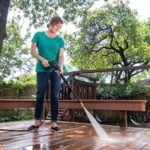(BPT) – Humpty Dumpty had the right idea when he sat on a wall.
Segmental retaining wall (SRW) units are a popular solution for beautiful and durable outdoor seating — from freestanding walls that double as seating and two-tiered couches to large applications such as cost-effective amphitheater and stadium seating.
Landscape professionals and do-it-yourselfers can build seating options from these multi-purpose units that are a trusted solution for soil retention, erosion control and to mitigate grade changes in the landscape.
Residential seating
“Retaining walls are both durable, beautiful and versatile tools of the trade,” says Scott Arnold, manager of Villa Landscapes in St. Paul, Minnesota. “Our landscape designers use retaining wall systems to create hardscapes such as fire features, raised patios, planters and other outdoor living amenities in addition to retaining walls, tiered seat walls and freestanding walls.”
The solid, pinned units provide extreme versatility and ease of installation. “VERSA-LOK is an ideal building block for tiered wall seating and even amphitheater seating because of its outstanding ability to create curves, corners, columns and tiers with the single Standard unit and no special pieces,” Arnold says.
A couch kit is one popular use of the VERSA-LOK retaining wall units, said Arnold. The curved couch with a tiered back provides seating for up to four people, and stepped ends make an attractive accent. It can be installed in a paver patio or as a stand-alone seating in the garden.
A versatile tool
Seat walls can be worked into many landscaping designs. Freestanding seat walls can frame a square or circular patio to create an outdoor room, doubling the function and value of the retaining wall.
“Some of our most popular installations feature fireplaces on a patio or a fire ring surrounded by a seat wall,” says Kelly O’Donahue, a landscape designer with Villa. “Seat walls or a hardscape couch around a fire feature are useful and beautiful additions to any outdoor living space that you can enjoy all season.”
SRWs can be used to replace an aging deck by creating a raised patio to grade, says Arnold. A freestanding seat wall can be built within the raised patio to serve as seating, to define the outdoor room and provide a measure of fall protection.
Commercial seating
Event spaces such as stadiums, courtyards, outdoor classrooms and amphitheaters have benefitted from economical outdoor seating solutions using SRWS. Staff at the International institute of St. Louis wanted to create an event space in an area that had a crumbling cinderblock wall separating the courtyard from the parking lot. Landscape architect Brad Furfaro worked with the site architect to come up with a tiered wall seating solution.
“We met the challenge of creating a beautiful outdoor space that looked nice and function as seating, but also was a structure to hold the parking lot hillside back,” says Furfaro, who owns Furfaro Design-Build Landscapes in St. Louis. “For a measure of design continuity, we were also able to use caps that match the SRW units on an existing cinderblock wall that did not have to be removed.”
The new amphitheater-style space seats about 80 people for outdoor training and events. “One challenge was a grade change from the base of the wall to the top and also a horizontal grade change from one end to the other,” Furfaro says. “The slope and seating starts out 4 feet on the east end and graduates to more than 6 feet on the west end. I had not used VERSA-LOK in this way before, but I knew that it’s a block that I can do anything with.”
It’s a good idea to sit on a wall when so many outdoor living features can be created with SRWs. From curved couches and freestanding seatwalls to amphitheaters and stadium seating, retaining wall units not only function as they were intended but also offer new solutions for outdoor living projects.






